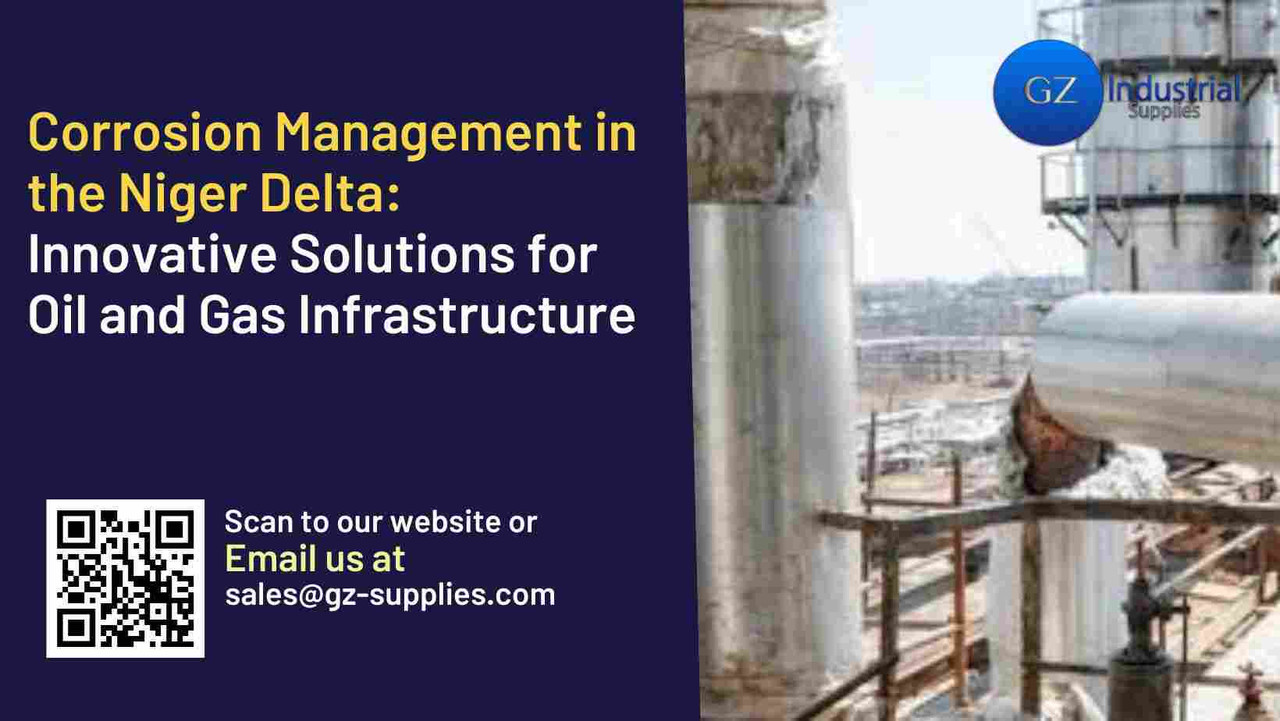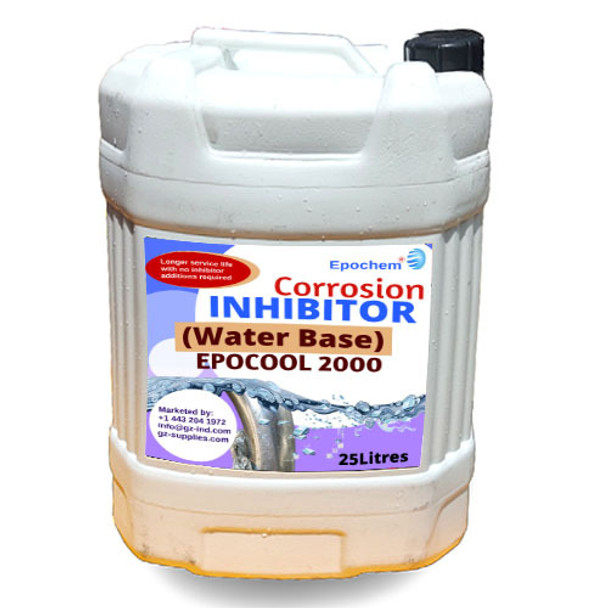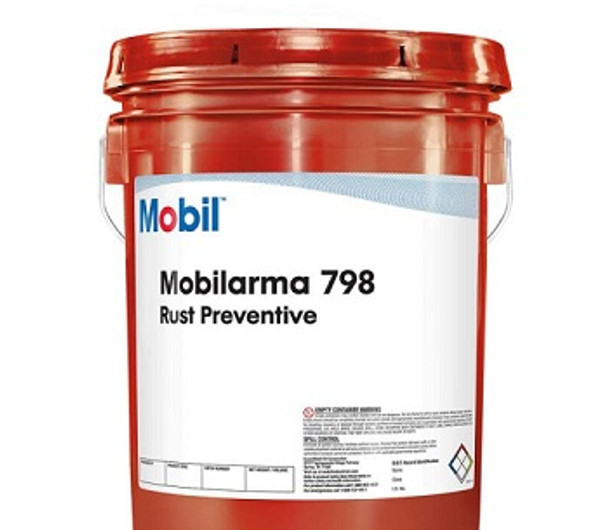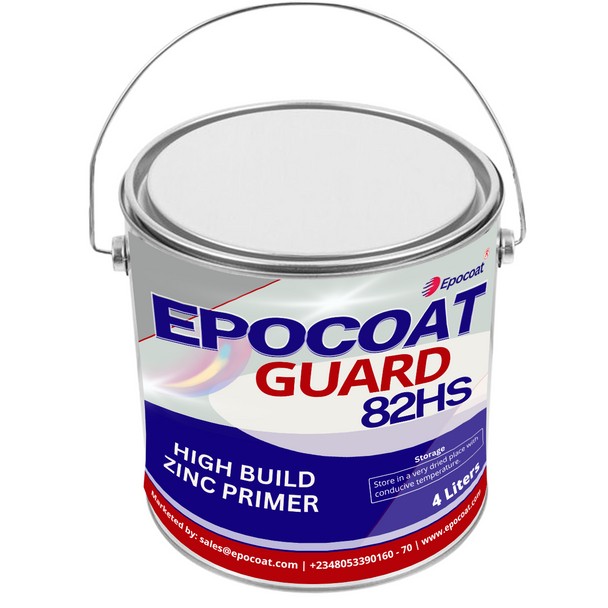Corrosion Management in the Niger Delta: Innovative Solutions for Oil and Gas Infrastructure
Key Takeaways
- Innovative Anti-Corrosion Technologies: Advanced coatings, cathodic protection, and corrosion-resistant materials are crucial for prolonging the lifespan of oil and gas infrastructure in the corrosive environment of the Niger Delta.
- Environmental and Economic Impact: Effective corrosion management reduces the risk of environmental contamination and costly infrastructure failures, safeguarding both the ecosystem and the economy.
- Regular Monitoring and Maintenance: Continuous monitoring and proactive maintenance are essential to detect early signs of corrosion, enabling timely intervention and preventing large-scale damage.
- Importance of Localized Solutions: Tailoring corrosion management strategies to the specific environmental conditions of the Niger Delta, such as high humidity and salinity, improves their effectiveness and reliability.
- Collaboration and Training: Ongoing collaboration between government agencies, oil companies, and local communities, along with regular training for personnel, ensures the successful implementation of corrosion management practices.
Introduction
The Niger Delta, located in the southern part of Nigeria, is one of the most critical oil-producing regions globally. Rich in hydrocarbon reserves, it plays a pivotal role in Nigeria’s economy as the primary contributor to the country’s oil and gas output. The region, characterized by its complex network of rivers, creeks, and swamps, presents unique environmental challenges that significantly impact oil and gas infrastructure.
Corrosion is a major concern for oil and gas operators in the Niger Delta, affecting pipelines, storage tanks, offshore platforms, and other critical assets. This deterioration process, primarily caused by the interaction of metal surfaces with the environment, leads to material loss, structural failures, and significant economic losses.
Traditional methods have often fallen short, leading to frequent failures, environmental hazards, and economic losses. However, innovative solutions are emerging, offering more effective ways to combat corrosion. These include advanced protective coatings, cathodic protection systems, and the use of corrosion-resistant alloys tailored to the unique conditions of the Niger Delta. By adopting these cutting-edge technologies and strategies, the oil and gas sector can significantly reduce the risks associated with corrosion, ensuring the long-term integrity and sustainability of its operations in this crucial area. Effective corrosion management is essential to prevent costly downtime, environmental damage, and catastrophic failures that could result in safety hazards.
Epocool 2000 Corrosion Inhibitor Coolant
Understanding Corrosion in Oil and Gas Infrastructure
Causes of Corrosion in the Niger Delta
Corrosion in the Niger Delta is driven by several environmental factors, including high humidity, salinity from the Atlantic Ocean, and extreme temperature variations. The frequent exposure of pipelines and equipment to saltwater accelerates the corrosion process, particularly in coastal and offshore environments. Additionally, the presence of aggressive chemicals in crude oil, such as hydrogen sulfide (H₂S) and carbon dioxide (CO₂), exacerbates the corrosion of metallic surfaces.
Microbial-induced corrosion (MIC) is another prevalent issue in the region. Specific bacteria, such as sulfate-reducing bacteria (SRB), thrive in the moist, warm conditions of the Niger Delta and contribute to the degradation of metal surfaces through their metabolic byproducts, which are highly corrosive.
Types of Corrosion Affecting Oil and Gas Assets
1. Uniform Corrosion: This type of corrosion affects metal surfaces evenly, leading to a uniform thinning of the material. Although predictable, it still poses a significant risk if not managed properly.
2. Pitting Corrosion: This localized form of corrosion creates small pits or holes in the metal, which can penetrate deeply and cause rapid failure of pipelines or tanks. Pitting is particularly dangerous because it is often hidden and hard to detect without thorough inspections.
3. Galvanic Corrosion: Occurs when two dissimilar metals are in contact in the presence of an electrolyte, leading to accelerated corrosion of the more reactive metal. In the Niger Delta, this is common in mixed-metal infrastructure where stainless steel, carbon steel, and other alloys are used together.
4. Microbial-Induced Corrosion (MIC): Caused by the metabolic activities of microorganisms, MIC can result in aggressive and localized damage to metal surfaces. It is especially problematic in stagnant or low-flow areas of pipelines and storage facilities.
Mobilarma 798 Premium Performance Rust Preventive
Challenges of Corrosion Management in the Niger Delta
1. Environmental and Climatic Challenges
The Niger Delta’s hot, humid, and saline environment creates a perfect breeding ground for corrosion. Saltwater intrusion from the Atlantic Ocean accelerates the degradation of metallic surfaces, while frequent flooding and waterlogging create conditions conducive to corrosion. Additionally, seasonal temperature changes can cause expansion and contraction in metal, further weakening infrastructure.
2. Operational Challenges
Accessibility to infrastructure is a significant challenge in the Niger Delta. Oil and gas facilities are often located in remote, swampy areas, making regular inspection and maintenance difficult and costly. The lack of developed roads and transport systems complicates the logistics of transporting anti-corrosion materials and repair crews to affected sites.
Moreover, stringent regulatory requirements for environmental protection mean that operators must adopt corrosion management solutions that not only protect assets but also comply with environmental standards. Balancing these operational and regulatory challenges requires innovative and sustainable approaches.
3. Economic and Logistical Challenges
The financial impact of corrosion in the oil and gas industry is substantial, with costs associated with maintenance, repairs, and replacements running into millions of dollars annually. For operators in the Niger Delta, the high costs are further exacerbated by the need for specialized anti-corrosion materials and technology that can withstand the harsh environmental conditions. The region's complex supply chain issues, including importation delays and inconsistent availability of materials, add another layer of challenge, making it difficult to maintain a robust corrosion management program.
Epochem 430 Rust Remover 5 Liters
Innovative Solutions for Corrosion Management
1. Advanced Coatings and Paints
Protective coatings are one of the first lines of defense against corrosion in the oil and gas industry. In the Niger Delta, advanced coatings specifically designed for harsh marine and industrial environments are essential. These coatings include epoxy, polyurethane, and zinc-rich primers that provide a robust barrier against environmental elements. Modern coatings may also include additives that inhibit corrosion and extend the life of the infrastructure.
A notable example is the use of fusion-bonded epoxy (FBE) coatings for pipelines, which offer excellent adhesion and resistance to chemicals, making them highly effective in protecting metal surfaces exposed to corrosive agents.
2. Cathodic Protection Techniques
Cathodic protection is a proven method used to control corrosion by making the metal surface the cathode of an electrochemical cell. There are two primary types: sacrificial anode systems and impressed current systems.
1. Sacrificial Anode Systems: These systems involve attaching a more reactive metal (e.g., zinc, magnesium) to the protected metal, which then corrodes instead of the infrastructure.
2. Impressed Current Systems: This method uses an external power source to provide a constant protective current, preventing the metal surface from corroding. It is particularly effective for large structures like offshore platforms and long pipelines.
3. Use of Corrosion Inhibitors
Corrosion inhibitors are chemicals that, when added in small amounts to a corrosive environment, significantly reduce the rate of corrosion. In the Niger Delta, inhibitors are commonly used in pipelines, process facilities, and production systems. There are several types of inhibitors, including anodic, cathodic, and mixed inhibitors, each tailored for specific applications depending on the operating conditions.
For instance, in oil and gas pipelines, inhibitors are often injected into the fluid stream to form a protective film on the metal surface, preventing the corrosive agents from reacting with the metal. The selection of inhibitors is crucial, considering factors like fluid composition, temperature, pressure, and environmental regulations. Sustainable and environmentally friendly inhibitors are increasingly being used to minimize ecological impact.
4. Pipeline Integrity Management Systems (PIMS)
Pipeline Integrity Management Systems(PIMS) are comprehensive approaches that combine inspection, monitoring, and maintenance strategies to ensure the continuous operation of pipelines. PIMS incorporate technologies such as in-line inspection tools (commonly known as “smart pigs”), which travel inside the pipeline to detect anomalies like corrosion, cracks, and metal loss.
In the Niger Delta, the integration of PIMS with digital technologies, including sensors and data analytics, allows operators to gather real-time data on pipeline conditions. This data is then analyzed using predictive models to forecast potential failures, enabling proactive maintenance. The use of PIMS not only extends the life of pipelines but also ensures compliance with regulatory standards, enhancing the safety and reliability of the oil and gas infrastructure.
5. Microbial Corrosion Mitigation Techniques
Microbial-induced corrosion (MIC) is particularly challenging due to the biological nature of the corrosion process. Techniques to mitigate MIC involve controlling the microbial population using biocides, which are chemicals that kill or inhibit the growth of bacteria. However, biocides must be carefully selected to ensure they are effective against the specific types of bacteria present without causing environmental harm.
Another approach is the use of coatings that incorporate antimicrobial agents, which provide long-lasting protection against bacterial colonization on metal surfaces. Additionally, regular pigging (cleaning) of pipelines can remove biofilms and other deposits that harbor corrosive microbes, reducing the risk of MIC.
Epocoat guard 82 HS (High Build Zinc Primer)
Case Studies: Success Stories of Corrosion Management in the Niger Delta
1. Offshore Platform Cathodic Protection Upgrade
A major oil company operating in the Niger Delta upgraded the cathodic protection system on its offshore platform to combat accelerated corrosion due to high salinity levels. The implementation of an impressed current system, coupled with real-time monitoring sensors, resulted in a significant reduction in maintenance costs and extended the platform’s operational life.
2. Pipeline Coating Rehabilitation Project
In response to severe external corrosion on a critical pipeline, an operator in the region undertook a comprehensive coating rehabilitation project. By applying advanced fusion-bonded epoxy coatings, the pipeline’s integrity was restored, and subsequent inspections revealed a dramatic decrease in corrosion rates, enhancing the pipeline’s performance and safety.
3. Use of Corrosion Inhibitors in Produced Water Treatment
In an effort to manage internal corrosion in produced water systems, a company introduced a specially formulated corrosion inhibitor. This not only protected the metal surfaces from corrosive elements but also helped in controlling scale formation, further improving the efficiency of the production system.
Future Trends in Corrosion Management
Emerging Technologies
The field of corrosion management is rapidly evolving, with new technologies continually being developed to address the unique challenges faced by the oil and gas industry. One promising area is the use of nanotechnology-based coatings, which offer superior protection through extremely thin, yet highly durable layers that resist abrasion, chemicals, and microbial activity.
Self-healing materials are another exciting development. These materials can automatically repair small cracks or damage when exposed to certain conditions, thereby preventing the initiation of corrosion. Such technologies are particularly beneficial in inaccessible areas where regular maintenance is challenging.
1. Digital Transformation in Corrosion Monitoring
Digitalization is transforming corrosion management by enhancing the ability to predict and prevent corrosion-related failures. Technologies like digital twins—a virtual replica of physical assets—allow operators to simulate different scenarios and assess the impact of corrosion over time. By integrating sensor data and AI-driven analytics, digital twins provide real-time insights into the condition of infrastructure, enabling operators to make data-driven decisions.
2. Environmental and Sustainable Solutions
As environmental regulations tighten, there is a growing focus on sustainable corrosion management practices. The industry is moving towards the use of green inhibitors, which are derived from natural sources and have minimal environmental impact compared to traditional chemical inhibitors. Research into bio-based coatings and environmentally friendly materials continues to advance, providing alternatives that not only protect assets but also align with sustainability goals.
Recommendations for Oil and Gas Operators
To effectively manage corrosion in the challenging environment of the Niger Delta, oil and gas operators should consider adopting the following best practices:
1. Implement a Comprehensive Corrosion Management Program (CMP): A well-structured CMP should cover all stages of asset life, from design and material selection to maintenance and decommissioning. Regular risk assessments and audits are essential to identify vulnerabilities and implement corrective measures.
2. Leverage Advanced Monitoring Technologies: Utilize real-time monitoring tools, such as corrosion sensors and remote data acquisition systems, to continuously track the condition of assets. This approach allows for early detection of corrosion, enabling timely intervention before significant damage occurs.
3. Invest in Training and Capacity Building: Equip personnel with the necessary skills and knowledge to handle corrosion management technologies. Continuous training on the latest techniques and regulatory compliance is critical for maintaining a proactive corrosion control strategy.
4. Prioritize Sustainable Solutions: Opt for eco-friendly inhibitors, coatings, and maintenance practices that minimize environmental impact while ensuring robust protection against corrosion. Collaborate with suppliers who provide sustainable corrosion management products.
5. Regularly Update Maintenance Strategies: Maintenance schedules should be dynamic and adaptable, based on the latest inspection data and predictive models. Implementing predictive maintenance strategies can help reduce costs and extend the life of assets.
Frequently Asked Questions
1. What is the most common type of corrosion in the Niger Delta?
The most common types of corrosion in the Niger Delta include pitting corrosion and microbial-induced corrosion (MIC), driven by the region's high humidity, salinity, and the presence of corrosive bacteria.
2. How can corrosion inhibitors improve pipeline longevity?
Corrosion inhibitors work by forming a protective film on the inner walls of pipelines, preventing corrosive agents from reacting with the metal. This significantly reduces the rate of corrosion and extends the pipeline’s service life.
3. Are there environmentally friendly options for corrosion management?
Yes, there are eco-friendly solutions such as green inhibitors and bio-based coatings that offer effective corrosion protection with minimal environmental impact. These sustainable options are increasingly being adopted in the oil and gas industry.
4. How does cathodic protection work in offshore platforms?
Cathodic protection works by diverting the electrochemical reaction that causes corrosion, making the platform structure the cathode of an electrochemical cell. This is achieved using either sacrificial anodes or impressed current systems, which protect the metal from corroding.
5. What role does digital technology play in corrosion management?
Digital technology, such as sensors, AI, and digital twins, plays a critical role in corrosion management by providing real-time monitoring, predictive maintenance, and data-driven insights. These technologies help operators proactively address corrosion issues before they escalate.
Additional Resources
HOW DOES CORROSION INHIBITOR WORK
WHAT IS THE DIFFERENCE BETWEEN CORROSION INHIBITOR AND RUST REMOVER
Why Is It Important To Eliminate Rust Or Corrosion From Your Businesses Facilities?
Conclusion
Corrosion management is crucial for the longevity and safety of oil and gas infrastructure in the Niger Delta. By adopting innovative solutions such as advanced coatings, cathodic protection, and digital monitoring technologies, operators can significantly reduce the impact of corrosion. Emphasizing sustainability and proactive management will not only protect valuable assets but also ensure compliance with environmental standards. The ongoing commitment to corrosion control is vital for the future of the region’s oil and gas industry.
For comprehensive corrosion management solutions tailored to the unique challenges of the Niger Delta, consider partnering with experts who understand the environment and have a proven track record in the industry. GZ Industrial Supplies offers a wide range of anti-corrosion products, coatings, and monitoring systems designed to protect your assets and enhance operational efficiency. Visit GZ Industrial Supplies to explore our products and services or contact our team for expert advice on managing corrosion effectively. Protect your investments—partner with GZ Industrial Supplies today!












